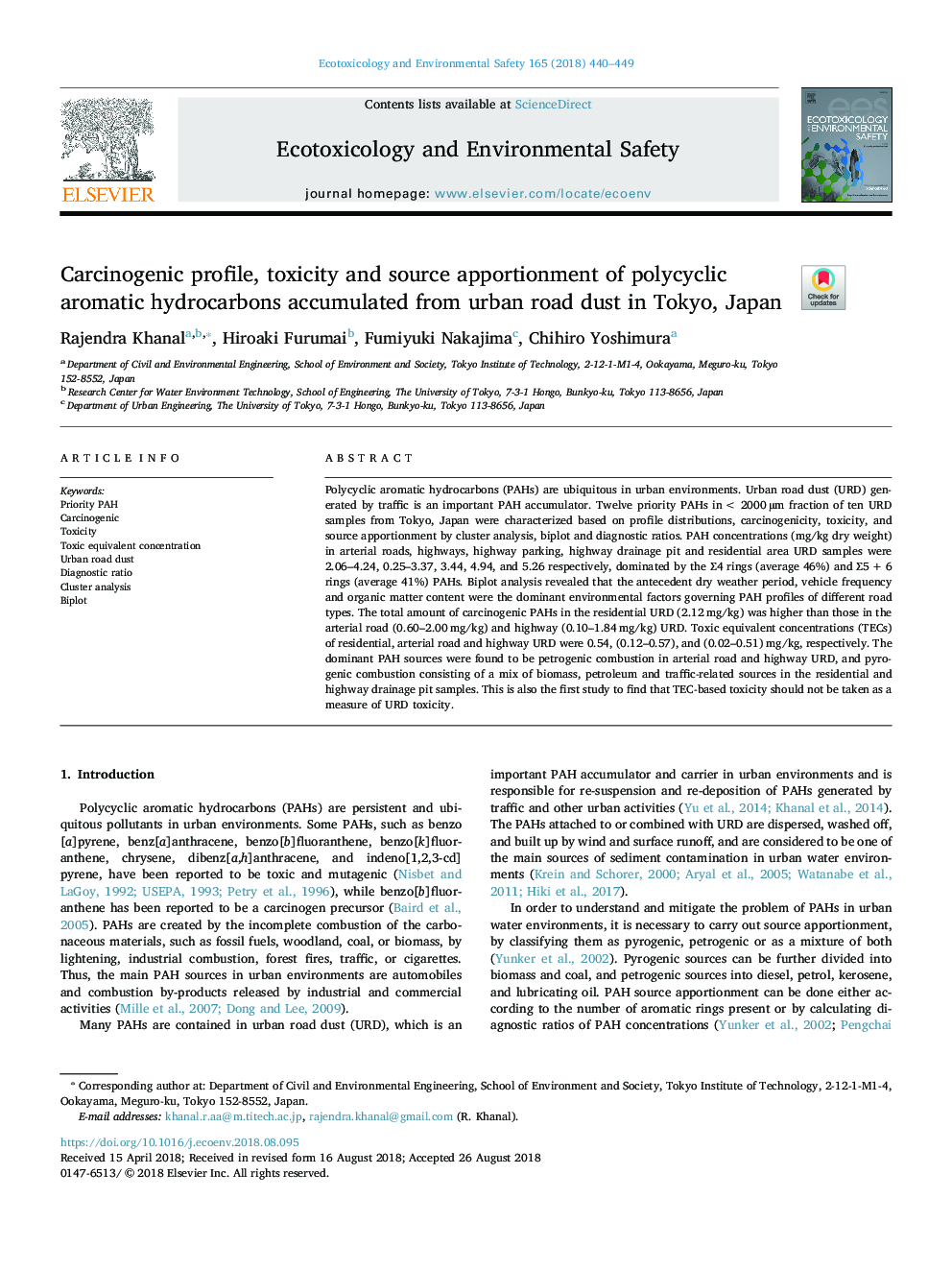| Article ID | Journal | Published Year | Pages | File Type |
|---|---|---|---|---|
| 10144410 | Ecotoxicology and Environmental Safety | 2018 | 10 Pages |
Abstract
Polycyclic aromatic hydrocarbons (PAHs) are ubiquitous in urban environments. Urban road dust (URD) generated by traffic is an important PAH accumulator. Twelve priority PAHs in <â¯2000â¯Âµm fraction of ten URD samples from Tokyo, Japan were characterized based on profile distributions, carcinogenicity, toxicity, and source apportionment by cluster analysis, biplot and diagnostic ratios. PAH concentrations (mg/kg dry weight) in arterial roads, highways, highway parking, highway drainage pit and residential area URD samples were 2.06-4.24, 0.25-3.37, 3.44, 4.94, and 5.26 respectively, dominated by the â4 rings (average 46%) and â5â¯+â¯6 rings (average 41%) PAHs. Biplot analysis revealed that the antecedent dry weather period, vehicle frequency and organic matter content were the dominant environmental factors governing PAH profiles of different road types. The total amount of carcinogenic PAHs in the residential URD (2.12â¯mg/kg) was higher than those in the arterial road (0.60-2.00â¯mg/kg) and highway (0.10-1.84â¯mg/kg) URD. Toxic equivalent concentrations (TECs) of residential, arterial road and highway URD were 0.54, (0.12-0.57), and (0.02-0.51) mg/kg, respectively. The dominant PAH sources were found to be petrogenic combustion in arterial road and highway URD, and pyrogenic combustion consisting of a mix of biomass, petroleum and traffic-related sources in the residential and highway drainage pit samples. This is also the first study to find that TEC-based toxicity should not be taken as a measure of URD toxicity.
Related Topics
Life Sciences
Environmental Science
Environmental Chemistry
Authors
Rajendra Khanal, Hiroaki Furumai, Fumiyuki Nakajima, Chihiro Yoshimura,
